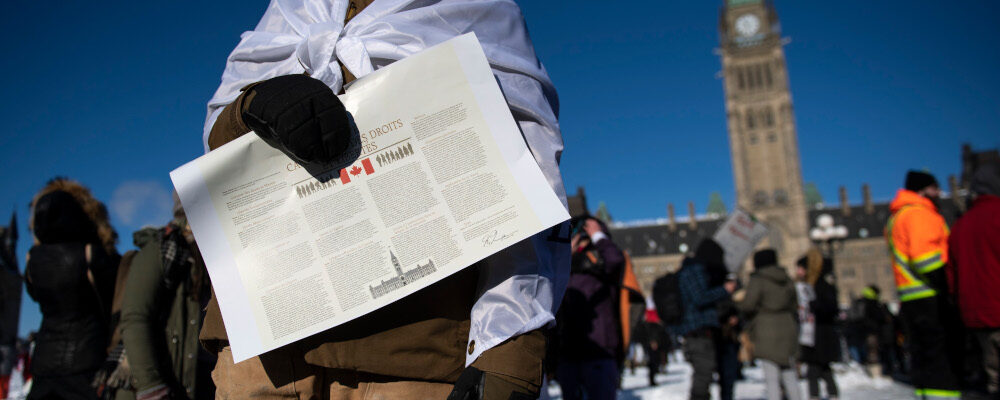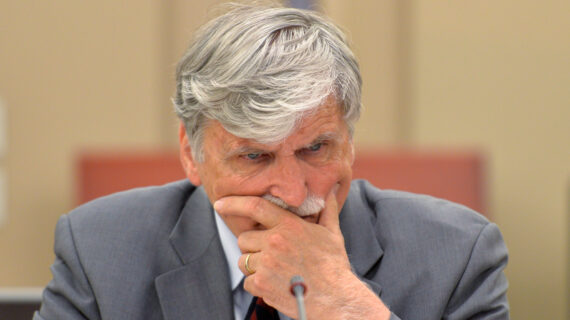Late last year, Canada lost one of its constitutional architects. The Honourable Barry L. Strayer, a principal drafter of the Charter of Rights and Freedoms, died in Ottawa on December 3, 2022, at the age of 90.
By happenstance, I only learned of Strayer’s passing very recently. Somewhat to my surprise, I discovered that, apart from the publication of an obituary, nothing seems to have been published to mark his death. This, in my view, should not be the case for someone who played a pivotal role in Canada’s constitutional development.
Born in Saskatchewan in 1932, Strayer obtained his law degree at the University of Saskatchewan and completed graduate studies in law at Oxford and Harvard. In the early stages of his career, in the late 1950s and early 1960s, Strayer taught law at the University of Saskatchewan and worked for the province’s attorney general. In the latter context, Strayer formed part of Saskatchewan’s delegation to a number of federal-provincial conferences on the future of the Canadian Constitution.
In 1967, Strayer went to Ottawa to work on constitutional matters within the federal Department of Justice. Over the next 15 years, Strayer was at the epicentre of constitutional design and reform. Working with Prime Minister Pierre Trudeau, Strayer eventually became assistant deputy minister of justice and a principal drafter of the Charter of Rights and Freedoms as well as other elements of Canada’s constitutional transformation of 1982. For a part biographical and part legal-historical account of this transformation, Strayer’s book entitled Canada’s Constitutional Revolution is a must-read.
In 1983, Strayer joined the judiciary: first as a judge of the Federal Court of Canada and later as a judge of the Federal Court of Appeal and as Chief Justice of the Court Martial Appeal Court. Strayer remained a judge until his retirement from the bench in 2004. In 2010, he was invested as an Officer of the Order of Canada. His citation rightly describes him as a “renowned expert in constitutional law” who “holds a distinguished place in Canada’s legal history”. In his public service, he “contributed considerable wisdom and insight to the evolution of a uniquely Canadian system for the administration of justice.”
Strayer’s contributions to constitutional architecture went far beyond Canada’s borders. His obituary recounts that he “drafted a constitution for the Republic of the Seychelles to restore constitutional government after a coup d’etat; advised the Government of Hong Kong on the drafting and adoption of a Bill of Rights in preparation for the transfer of sovereignty to the People’s Republic of China; and assisted the Canadian Bar Association in helping the Nepal Bar Association in the writing of a new constitution.”
On a personal note, Strayer’s writing on Canadian constitutional law has shaped my work as a legal academic. I believe my first encounter with his work occurred as I was trying to understand how the Canadian Constitution counted as the supreme law of Canada prior to 1982. After 1982, owing to the addition of an express supremacy clause in the Constitution, it was easy to identify what allowed Canadian courts to nullify legislation that violated the Constitution. What allowed courts in Canada to do so before 1982, however, is not so obvious. Strayer, it turns out, wrote his doctoral thesis at Harvard on how Canadian courts review legislation for constitutionality and later published it as a book. The clarity of his thinking on this topic has been invaluable as I have pursued my own writing on Canadian constitutional law and history, including a set of essays I wrote for The Hub last year to mark the 40th anniversary of the Charter.

I also had the good fortune to engage directly with Strayer when I invited him to participate in a virtual conference on forgotten foundations of the Canadian Constitution in April 2021. Strayer graciously accepted my invitation, and an abridged version of his remarks at the conference appear as the foreword to a collection of essays published last year that I and my co-editor Derek Ross had the privilege to assemble. These, to my knowledge, are the last scholarly words published under Strayer’s name. We are profoundly grateful for his generosity and willingness to entrust these remarks to us.
I am sure many individuals who knew Barry Strayer far better than I did could write a more nuanced and detailed tribute to him, and I hope these tributes are paid in due course. But it speaks volumes, in my view, that the details of his life that reside in the public record, standing alone, reveal that Strayer was an extraordinary Canadian. His life was, for Canada, a sterling example of public service.
I close with what Derek Ross and I wrote in the introduction to the collection of essays to which Strayer contributed. It is eminently fair to say that Strayer “is not only one of the architects of the Canadian Constitution, but, by virtue of what any constitution seeks to achieve, he is also an architect of Canada itself.”
May he rest in peace.




